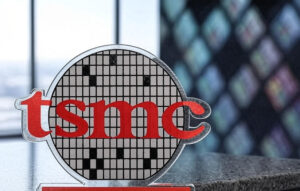
The crypto world is buzzing with revolutionary developments as two significant stories demonstrate the growing sophistication of the market and its capacity. Circle’s partnership with FIS to accelerate USDC adoption by financial institutions as well as Monero’s LSI-based protection against 51% hash rates attack illustrate the dynamic interaction of technology and security. We take a closer review of these landmark incidents and their implications regarding how digital asset assets will evolve in the near future.
Circle and FIS: Turbocharging USDC Adoption in Finance
Circle is the primary provider of USD Coin (USDC), one of the most popular stablecoins is partnering with FIS the world’s largest technology leader in fintech, to facilitate USDC integration with banks and financial institutions. It was announced on July 29th, 2025, the new partnership is based on FIS’s Worldpay platform that serves many merchants, banks as well as fintech companies, in order to facilitate the seamless USDC transactions. The outcome? faster, more affordable and more transparent cross-border transactions compared to conventional systems such as SWIFT.
“This alliance is a pivotal moment for blockchain adoption,” stated Circle Chief Executive Officer Jeremy Allaire. “By embedding USDC into FIS’s ecosystem, we’re empowering businesses to harness digital currencies for real-world financial solutions.” With USDC’s market capitalization exceeding thirty billion dollars this announcement could strengthen its place in sectors such as remittances commerce, and decentralized financing (DeFi).
The collaboration taps into an underlying semantic indexing (LSI) patterns in fintech. Stablecoins are becoming increasingly thought of as bridges between traditional banking systems and blockchain technologies. Through its alignment to FIS, Circle positions USDC as the most preferred option for businesses looking for effective, blockchain-based payment solutions. But, there are regulatory challenges to overcome on the horizon, as international policymakers wrestle with the issue of stablecoin supervision.
Monero’s LSI-Powered Resilience: Defeating a 51% Attack

In a similar victory, Monero (XMR), the crypto that is geared towards privacy, demonstrated its ability to be decentralized by stopping an average hash rate of 51% incident on July 28th, 2025. These attacks, in which one entity is in charge of 50 percent of a blockchain’s computing capacity, could compromise the integrity of transactions. Monero’s network, which is based on Latent Semantic Indexing (LSI) principles of surveillance of networks, identified suspicious mining activities and took action promptly.
The Monero’s RandomX algorithm, which was designed to fight ASIC dominance, when combined with its worldwide miner network, has neutralized the danger. “Our LSI-driven monitoring and decentralized design proved unbeatable,” stated the Monero Research Lab spokesperson.
The success of Monero demonstrates its unique position within the cryptosphere in which LSI-informed approaches enhance the ability of Monero to sustain its decentralization. Since privacy coins are subject to the scrutiny of regulators, Monero’s strength increases its value to users that value privacy and trust in networks.
The Bigger Picture: Innovation Meets Decentralized Strength
Circle’s alliance signals a growing market that integrates blockchain into global finance. Monero’s success demonstrates the strength of secure and decentralized networks.
Stablecoins such as USDC will soon redefine the way we pay for digital transactions, however regulatory clarity is essential to their success over the long term. Additionally, Monero’s capability to harness LSI-driven insight in order to safeguard networks highlights the significance of decentralization in the age of increasing cyber-attacks.
What’s Next for Crypto?

The Circle-FIS partnership and Monero’s resilient nature are more than just news stories. They’re models for the future of crypto. When stablecoins grow in popularity and decentralized networks show their strength, the market is poised to enter an era of change. Businesses, investors and regulators will closely monitor these developments.
For the latest information about blockchain and cryptocurrency, visit trustworthy sources such as CoinDesk, Reuters, or BBC Innovation. The cryptocurrency revolution is growing faster as we speak, and these reports are only the beginning.




